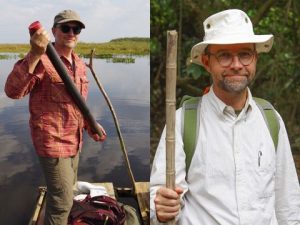Dr. Sarah Freidline

Dr. Sarah Freidline studies the origin and evolution of Homo sapiens using three-dimensional shape analysis, geometric morphometrics and bone histology techniques. These tools help her virtually reconstruct and quantify the morphological variations found in the skulls of fossils.
“My favorite part about being an anthropologist is the traveling. There is something magical about handling fossils of ancient humans hundreds of thousands of years old in the places they impacted history.”
Freidline’s work has made significant impacts on the field of paleoanthropology, including an analysis of the Xiahe Denisovan mandible in Tibet. Denisovans are an ancient group of hominins separate from both Homo sapiens and Neanderthals believed to inhabit parts of Asia. She has also contributed to the analysis of human fossils discovered in Jebel Irhoud, Morocco — the oldest H. sapiens fossils yet discovered.
Dr. Neil Duncan and Dr. John Walker

If you know where to look, the northeastern corner of Bolivia is an excellent window into pre-Columbian society. Anthropologists Dr. John Walker and Dr. Neil Duncan have uncovered evidence of raised fields and fish weirs dating to about 3,500 years ago.
“This finding is important because it provides evidence that the Amazon is not a pristine wilderness but has been shaped and designed by indigenous people thousands of years before the Spanish arrived,” Walker says.
The mud in this region serves as a time capsule of sorts, revealing to a paleoethnobotanist like Duncan evidence of corn and squash cultivation.
